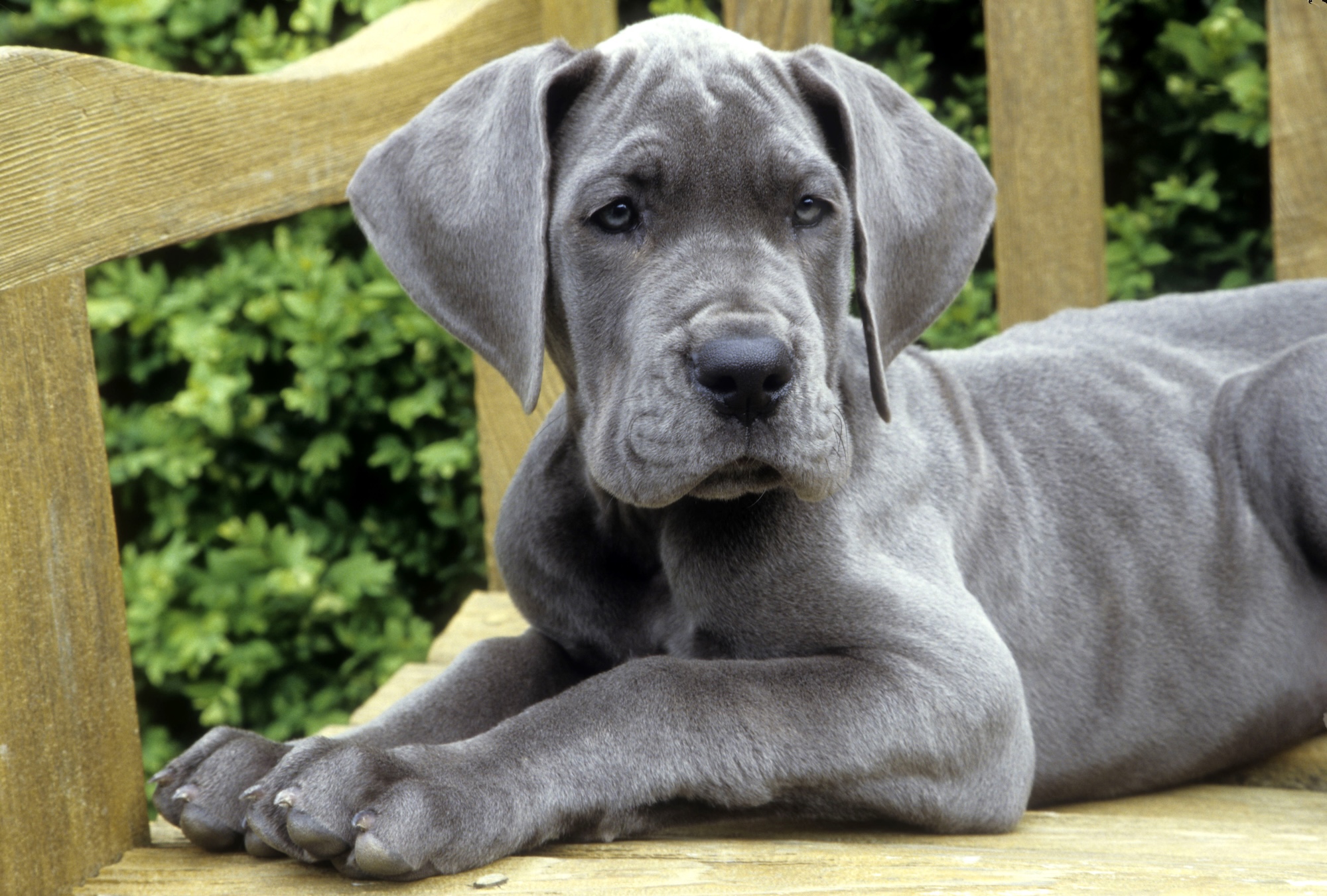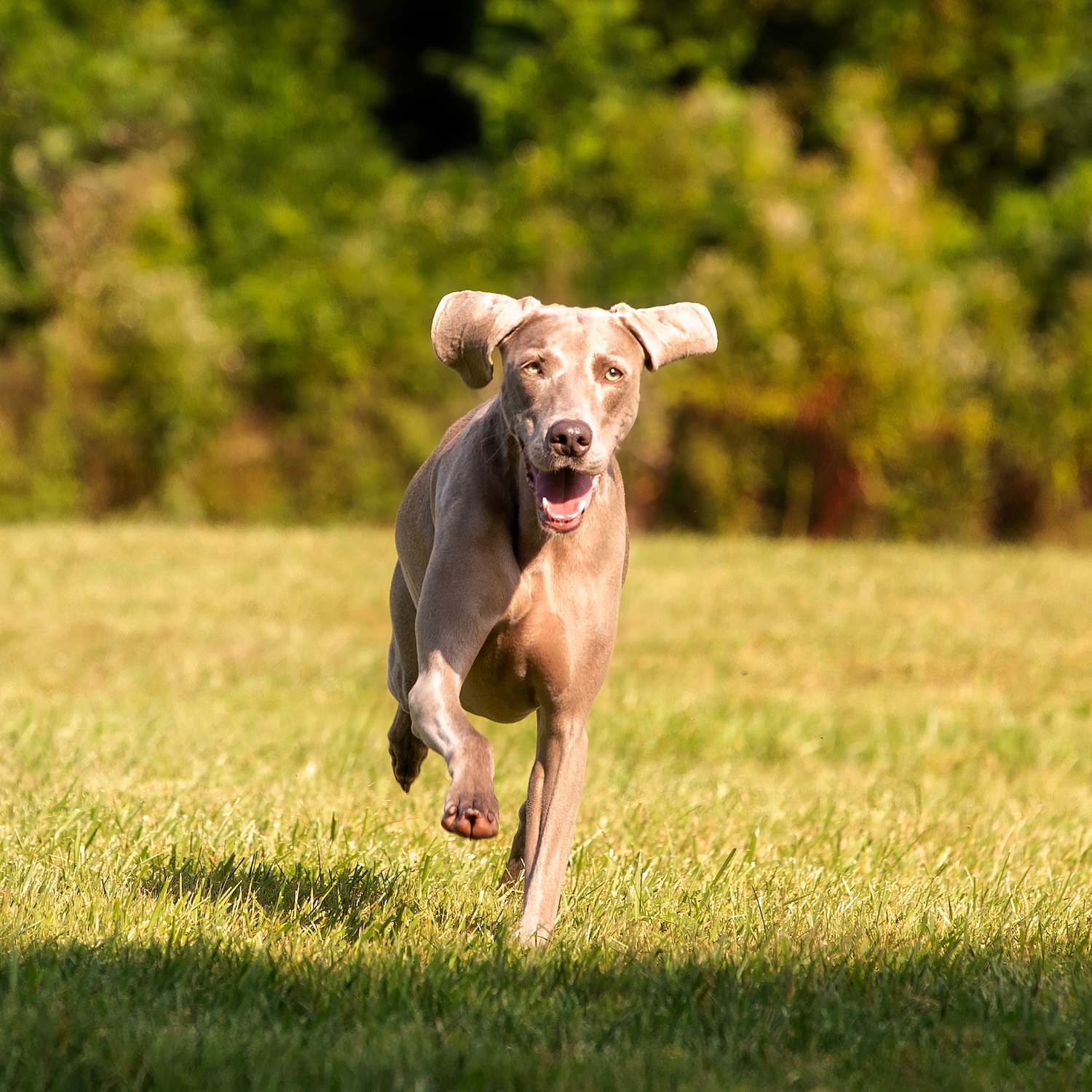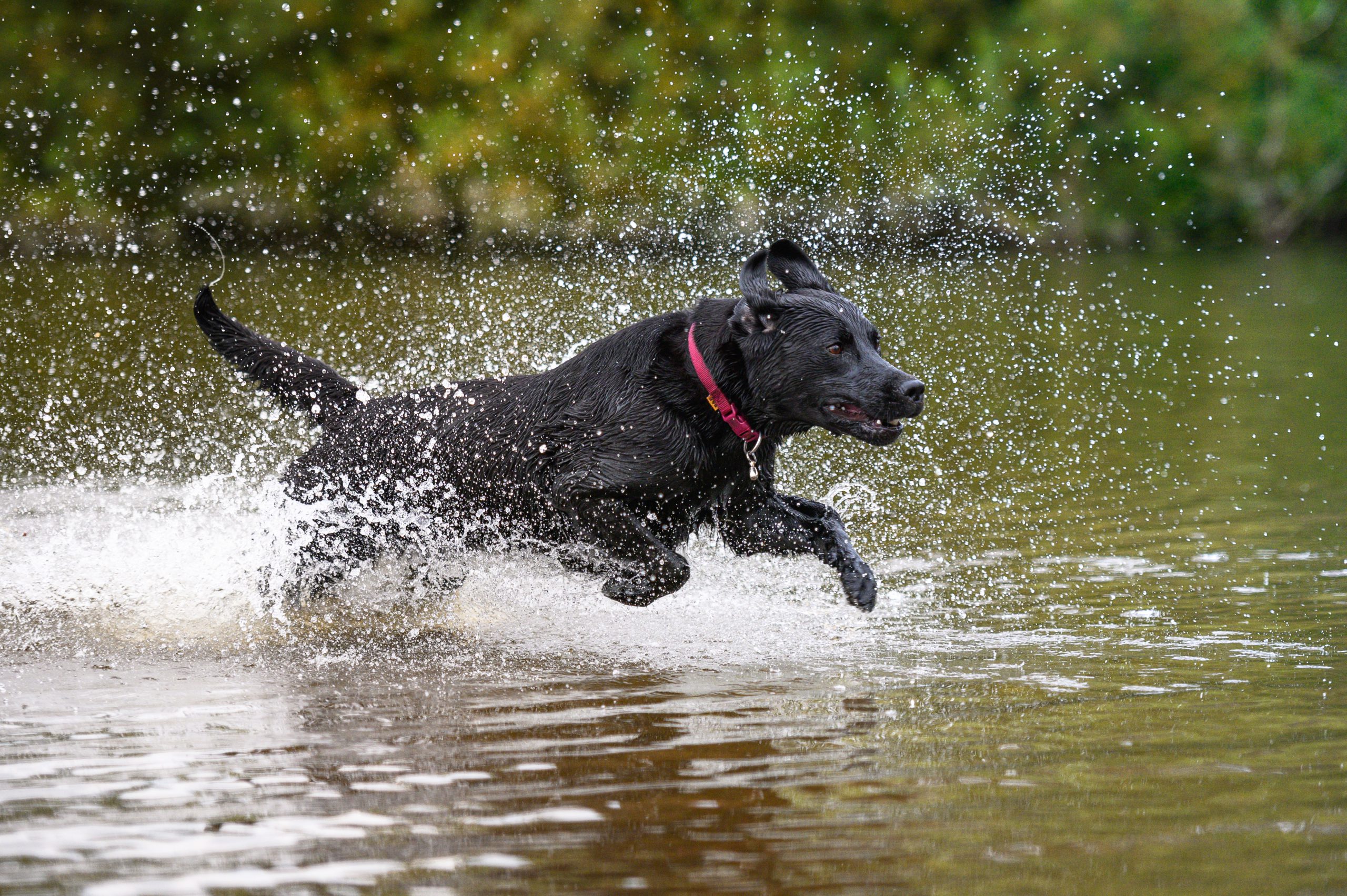Sleek and muscular, with a signature golden-rust coat, vizslas have a regal look to them—and no wonder, since these dogs, also known as Hungarian pointers, were the favored companions to Hungarian nobility for hundreds of years. You don’t have to be a baron, or even a hunter, to appreciate them, but there’s lots to know about keeping these exceptionally active dogs happy and healthy. Here’s a primer for anyone considering bringing a vizsla home, or looking to establish a great relationship with one they already have.
Vizslas: The basics
The American Kennel Club’s sporting group is perfect for vizslas. With boundless energy and keen intelligence, they’re built for long days of physical and mental work, especially outdoors. They grow to between 21 and 24 inches at the shoulder, and tend to weigh between 45 and 60 pounds. Vizslas have a distinctive smooth, rust-colored coat and expressive brown eyes, along with thin-skinned, silky, floppy ears that are rounded at the bottom. Their monochromatic coloring—down to their rust-colored noses—comes in handy for hunting, providing convenient camouflage as they go about their work seeking, pointing to, and retrieving prey for their owners.

Vizsla personality: Active and attached
With energy to spare, vizslas are good companions for people who enjoy a lot of endurance-based outdoor activity. Emphasis on a lot.
Plan for lots of outdoor off-leash running and exploring, plenty of mental stimulation to challenge their busy minds, and tons of attention—their nickname is “velcro vizslas” for how they stick to their people, says Debra Evalds, executive director of New Hope Vizsla Rescue.
“Oh, that energy!” says Jamie Walton, owner of four vizslas and an AKC Breeder of Merit. “When you get home from a long day at the office, do you just want to sit down and relax? That’s not an option with a vizsla. You can sit down only to be jumped on, barked at, laid on, and prodded until you get up and give them the attention they desire.”
Along with all that exercise and stimulation, vizslas crave affection. “Never have I seen a dog with more energy, but on the flip side, such a cuddle bug and little lover,” says Marla Weaver of her vizsla, Voodoo. “He has no idea he’s 67 pounds and still insists on sitting on my lap for every car ride. At night he sleeps on my pillow, not only just touching me but usually a little bit on me, too.” Evalds recommends spending time with vizslas before committing to one. “Vizslas are not just high-energy,” she says. “They are attention-needy and demand a lot of it. They are fantastic dogs, but they’re not easy dogs, especially if you don’t have dog experience with demanding breeds.”
Of her vizsla mix, Freya, Emma Pugliares says, “I work from home and she is my shadow throughout the day, following me from room to room. At home, she is happiest when we are snuggled on the couch together, preferably under a cozy blanket. And, of course, she loves nothing more than to be outside, running free. We try to make sure she gets at least 90 minutes of off-leash time each day.”
Vizslas also tend to be gentle with children, so they can make a great family dog, especially for families that enjoy outdoor adventures.
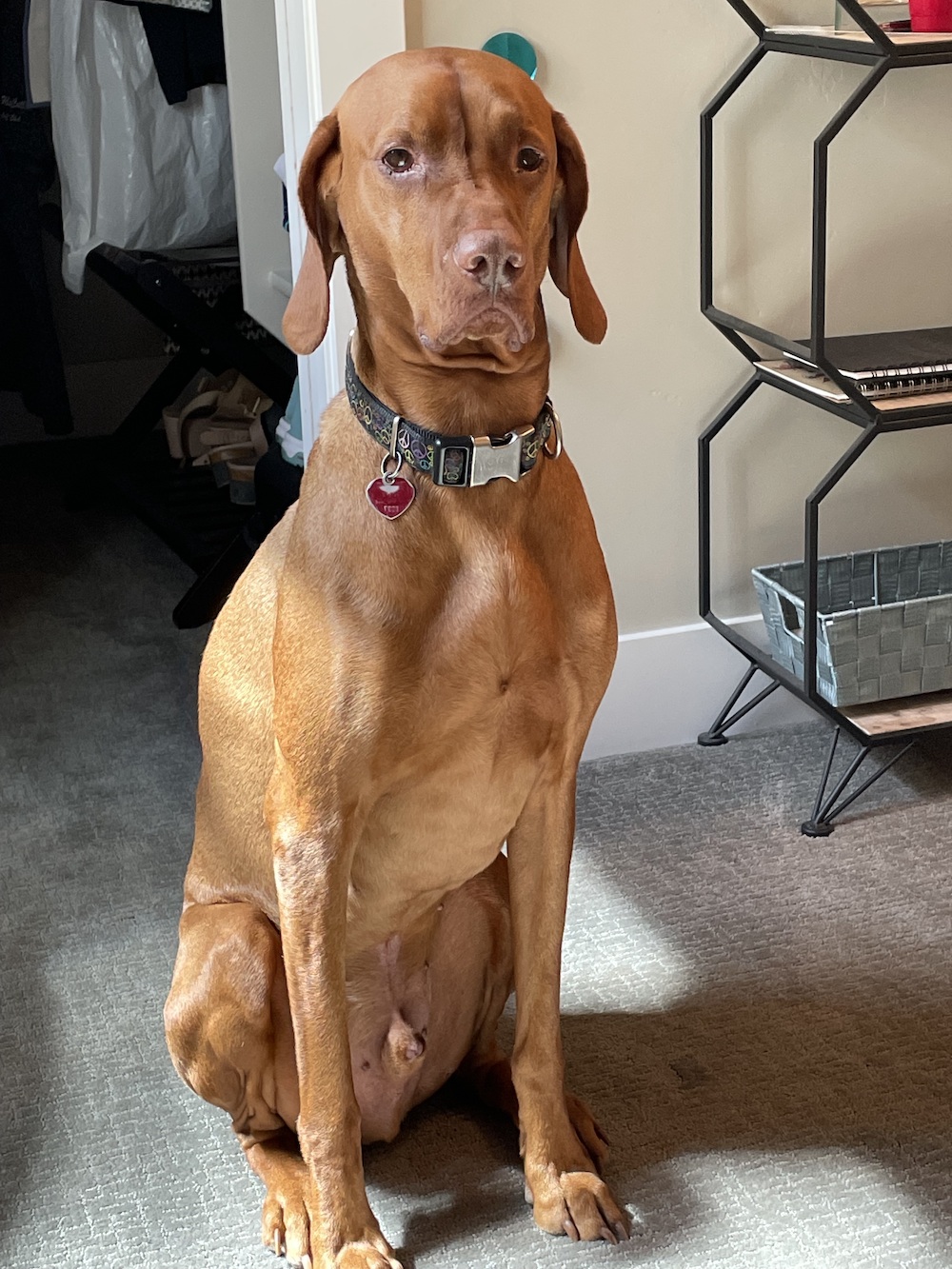
Breed history
Though they’ve only been in the US since the 1940s, vizslas are an ancient breed, dating back more than 1,000 years. They were kept alongside early Hungarian warlords and later by the aristocracy as prized hunting, pointing, and retrieving dogs as well as loyal companions. The breed survived multiple occupations and wars in Eastern Europe and neared extinction a few times, but was brought back from the brink by devotees. Vizslas first came to the United States at the end of World War II and were recognized formally by the AKC in 1960.
Training tips
Starting training early is especially important with such a high-energy breed. “Vizslas may be a high-drive breed, but this does not mean that a heavier hand is needed,” says Heather Mishefske, certified professional dog trainer and canine behavior consultant, owner of emBark dog day-care in Eau Claire, Wisconsin. “This is a sensitive breed who responds incredibly well to training that uses positive reinforcement and starts at an early age. It is infinitely easier to teach your vizsla puppy what you would like for them to do from the start.”
Though they love to run and adventure outside, vizslas need other forms of training and ample mental stimulation as well. “Just because they’re athletic doesn’t mean that all your activities together need to be aerobic,” Mishefske says. “Finding games that challenge their problem-solving and their excellent hunting noses are a good replacement on the days that you can’t get out for runs, walks, or hikes.”
Trainer Ruben Montes of Kindred Dog PDX in Portland, Oregon, notes that it’s important to use training techniques hunting dogs like vizslas will respond to. “For these types of dogs, off-leash training is helpful because they can run and explore and use their nose. These types of dogs are huge into sniffing,” he says. “Games like the flirt pole or tug can give them an outlet to use their mouth and hunting instincts in a constructive way. Playing ‘find the treat or toy’ games in the house can be great as well to get them to use their nose.”

Healthy Lifestyle for Vizslas
Exercise
Given their drive to hunt and overall energy level, vizslas need at least an hour a day of exercise, broken up into 2 or more sessions—and many will require more. It’s no wonder that the AKC considers vizslas one of the best breeds for owners who enjoy running.
Of her vizsla, Henry, Jennifer Swindell says, “He loves to run, and starts to pace 15 minutes before our scheduled time. He knows the difference between my jogging shoes and work shoes.”
Grooming
With their sleek, short coats, vizslas’ grooming needs are relatively light. Frequent brushing with a rubber grooming brush will help with shedding and keep their coats smooth and shiny. Vizslas need a bath once a month—unless an adventure outside leaves them unusually dirty or muddy. Keep their toenails clipped, check their ears occasionally for any irritation, and be sure to follow your vet’s advice on caring for their teeth.
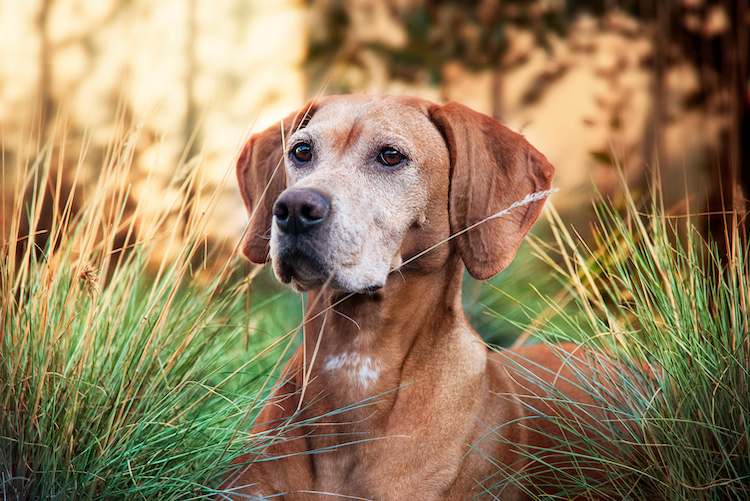
Common health concerns
Healthy vizslas tend to live from 12 to 15 years, according to the AKC. Along with ailments common to all dogs—such as dental disease, obesity, and cancer—vizslas are at particular risk for the following:
Dysplasia: Larger breeds in general are susceptible to hip dysplasia, a serious condition in which the ball and socket of the hip joint don’t fit together smoothly. It can cause pain, hinder mobility, and lead to arthritis, and vizslas also sometimes get it in their elbows as well. If your vizsla has trouble moving, getting up from a resting position, climbing stairs, or running; limps; or appears to be in pain on their feet, be sure to take them to the vet. Extra weight can exacerbate dysplasia and elbow problems, which is why it’s essential to keep your dog at a healthy weight and lean body condition—and to feed a healthy, precisely portioned diet. Treatment options include diet change, pain medication, nutritional supplements to support joint health, and surgery. Some dogs can benefit from moderate exercise (low impact/high resistance), and physical therapy.
Idiopathic Epilepsy: Vizslas are prone to this brain disorder, in which sudden electrical surges can cause seizures. There is no known cause, though researchers suspect it may be inherited. Before a seizure, dogs may hide or seek out their owners for comfort. During a seizure, which usually lasts for less than a minute, a dog may collapse, become rigid, or flex and extend their joints. If you see your dog having a seizure, carefully keep them safe from objects that could cause injury, but stay away from their mouth, as they might bite you inadvertently. Keep track of how long the seizure lasts and call your vet (or an emergency vet if it’s after hours). After the seizure, your dog may be disoriented or sleepy. Idiopathic epilepsy is often treated with anti-seizure medicine.
Hypothyroidism: When a dog has hypothyroidism, the thyroid gland doesn’t produce and release enough hormone. This condition is common in vizslas and many other breeds. Thyroid hormone regulates the body’s metabolism, so a vizsla whose thyroid isn’t making enough may experience sluggishness, weight gain, hair loss, digestive issues, and other symptoms. Hypothyroidism is serious when undiagnosed. A vet will check your dog for hypothyroidism by feeling the thyroid gland at the front of the neck, listening to their heart, and discussing any signs you may have noticed. Finally, blood tests will provide the definitive answer. The two most common causes of hypothyroidism in dogs are an autoimmune condition—in which the body attacks the gland—and idiopathic gland atrophy. Very rarely, hypothyroidism can be caused by cancer. There is no cure for hypothyroidism, but treatment options include hormone-replacement medicine and, if applicable, surgery to remove a tumor. With early treatment, vizslas with hypothyroidism can expect a long, quality life. This condition also affects the skin; if your dog has an allergic skin condition (see below), it may be worsened.
Skin Issues: There are a few skin conditions to which vizslas are susceptible.
- Atopic dermatitis: Also known as atopy or allergic dermatitis, this is a hereditary allergy to airborne irritants such as mold, dust mites, or pollen. When a dog inhales the irritant(s), their immune system overreacts, leading to ear infections or itchy skin that causes the dog to chew, lick, or scratch. You may notice oily skin or a musty odor. The scratching can also cause secondary infection. If your dog is allergic to pollen, they may be affected more at certain times of year and in particular regions. Treatments include more frequent bathing (sometimes with special shampoo), anti-inflammatory drugs, and omega 3 and 6 supplements.
- Sebaceous adenitis: Sebaceous glands rest in the skin of mammals alongside hair follicles, where they release an oily substance, sebum, that keeps the skin and hair in good condition. In some breeds, notably vizslas but also Akitas, poodles and a few others, an autoimmune condition called sebaceous adenitis can cause inflammation of these glands. The result is patches of hair loss, brittle hair prone to breakage, resilient scaling on the skin, and lesions that are susceptible to infection. It’s unsightly, itchy, and painful, but not life-threatening. The vet will confirm diagnosis with a skin biopsy. Unfortunately, sebaceous adenitis is challenging to treat and often recurs. Treatment options include oral antibiotics and topical medications to calm inflammation.
- Demodectic mange: Demodex mites, microscopic creatures that live in hair follicles, are common in all dogs. Usually, dogs’ immune systems manage them, but vizslas can develop an overabundance, which shows up as dry, irritated lesions and patches of hairlessness, often on the face or feet. They can be itchy and may cause secondary skin infections. Topical medication is often used to treat it.
Eye Conditions: Vizslas are susceptible to a few different types of issues with their eyes.
- Glaucoma: This is an unhealthy increase of pressure in the eye, which can damage or even destroy the retina. This painful condition can lead to blindness if untreated. Symptoms include watery discharge, redness, and protruding or enlarged eyes, and treatment involves medication that decreases the pressure and promotes fluid drainage.
- Cataracts: This is a medical condition in which the eye lens becomes more and more opaque, causing impaired vision and even blind spots. It shows up as thick, white spots at the center of the eye. If the cataracts are severe, your vet might recommend surgery to remove the tissue, which can restore eyesight.
- Entropion: In this eye condition, the eyelashes are turned inward toward the eye. If not caught early, it can lead to scratched corneas and permanent damage to the eyes. Symptoms include tearing, squinting, mucous discharge, and sensitivity to light. Sometimes your vet might try lubricating drops or topical antibiotics to treat it, but often surgery is needed to roll the eyelid out, so the eyelashes no longer touch the surface of the eye.
Bloat: Large, deep-chested dogs can be predisposed to bloat, a dangerous condition that occurs when a dog’s stomach is filled with too much food, liquid, or gas, causing it to expand and put pressure on other organs. Bloat can impede blood flow and breathing and can lead to gastric dilatation-volvulus (GDV), a potentially fatal condition in which excess gas causes the stomach to twist onto itself. If you notice a distended abdomen, retching, or signs of pain, contact a veterinarian as soon as you can, and speak to your vet about how to reduce the chances of bloat.
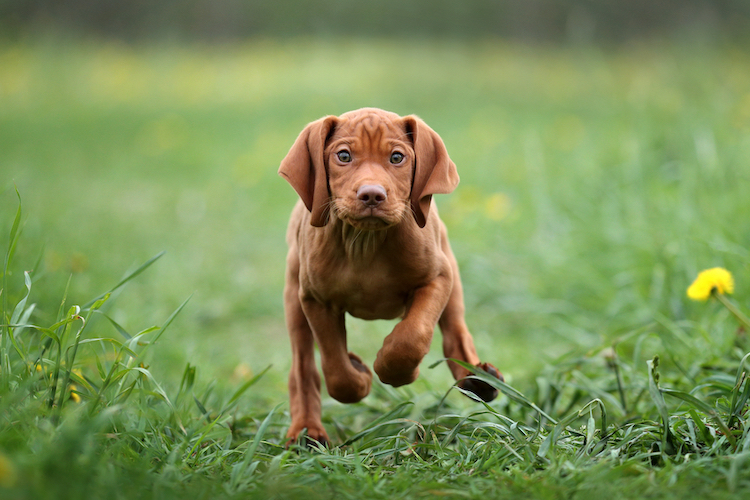
Food and nutrition
Like all dogs, vizslas need digestible, complete, and balanced food that supplies health-sustaining nutrients and enough energy for daily activities while helping maintain a healthy weight. A pre-portioned meal plan can supply a boost on all of these fronts.
Support joint health: A fresh diet that provides balanced omega-3 fatty acids could be an asset as you seek to ward off joint issues. A pre-portioned fresh food plan also makes it easy to feed the right number of calories every day. This helps maintain a healthy weight, which is another big factor in keeping joints healthy and staving off an array of other health issues.
Mind the teeth: Eating for dental health means eating for overall health. A fresh, whole-food diet promotes a healthy immune system, which helps ward off dental maladies. Crunchy kibble is often said to clean teeth, but, in fact, kibble is an ultra-processed food.
High-quality food for high-quality poops: A diet of fresh, lightly cooked food has been shown to be more digestible than processed kibble, and can promote a healthy gut and good digestion (which also means better, smaller poops).
A healthy diet—along with tons of exercise, training, vet care, and lots of attention and cuddles—is among the keys to giving your vizsla a happy life.
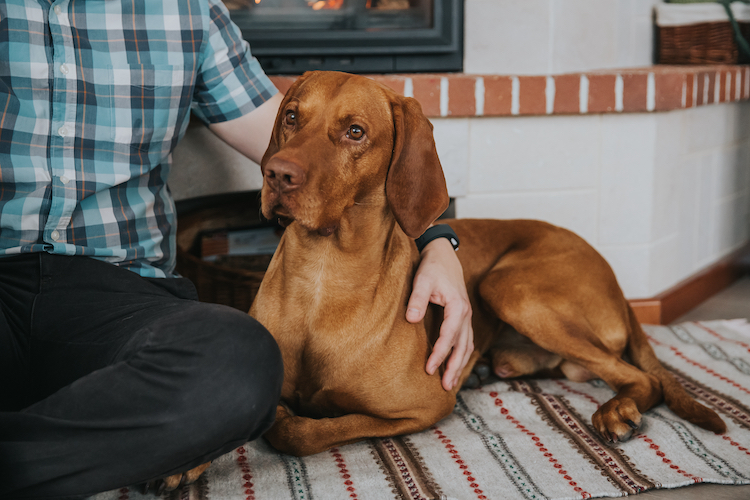
Where to get a vizsla
If you’d like to welcome a vizsla into your home, there are several rescue organizations that can help, including Vizsla Club of America, Vizsla Rescue Haven, Colorado/Wyoming Vizsla Rescue Group, Midwest Vizsla Rescue, and New Hope Vizsla Rescue.
